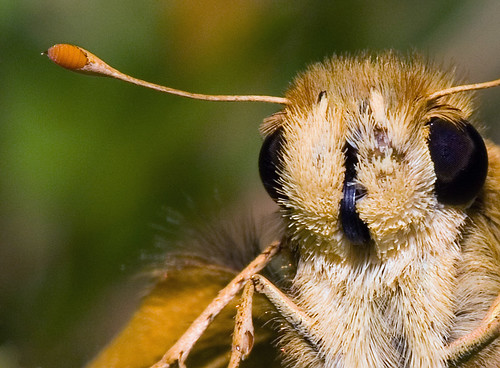What were those that just fluttered by? These insects are a common sight, but are they butterflies or moths? Have no fear, your Nature Geek is here! This week you'll learn just how to tell the difference between a moth and a butterfly.
Nocturnal vs. Diurnal
First, there's when each is typically active. Moths are typically most active at night (nocturnal), while butterflies are typically most active during the day (diurnal). This also explains another difference between moths and butterflies: their coloration. Moths are usually less brightly colored than butterflies, which makes sense. If you live in a world of darkness, there's not much need for bright colors. There are some beautiful, colorful moths out there though, such as the imperial moth:
I told you!
Body type
Butterflies have slender, sleek bodies that don't have a lot of fuzz on them.
A zebra longwing butterfly, Florida's state insect.
Moths, on the other hand, are stocky, fuzzy things. Not unlike some men I've known, actually.
This cecropia moth is one fuzzy fellow.
Antennae
Butterfly antennae, like their bodies, are slender, plus they have little clubs or balls on the end.
I know what you're thinking: "Hey! He's fuzzy!"
Remember, I said that butterflies don't have a lot of fuzz on them. Moths still reign fuzzy supreme.
And moth antennae, also like their bodies, are quite fluffy, resembling feathers or bunny ears. Male moths have even larger antennae, which they use to detect the pheromones of females.
Oh yeah, he's fluffy and he knows it.
Resting Position
Moths and butterflies generally hold their wings differently when they are resting, but of course there are always exceptions. With butterflies, it's wings up...
A monarch butterfly, probably the most recognized species of butterfly in North America.
...and with moths, it's wings out.
A luna moth making a daytime appearance.
Like I said, there are always exceptions. Butterflies often sun themselves when cold, which involves holding their wings out to catch as many heat-giving rays as possible.
I can certainly identify with this painted lady butterfly. There's nothing like some warm sun on a cool morning.
So! Now that you are armed with the geeky knowledge of how to tell moths and butterflies apart, let's take a look at those white fluttery things again:
Moths or butterflies? If you said butterflies, you're right! Those slender bodies and beady antennae were your clues, weren't they? These commonly seen butterflies are cabbage whites, and if you want to get really geeky, the two spots on each wing (the second spot on the right butterfly is barely visible beneath the hind wing) tell us that these are two females.
Hey, what do you call a butterfly's mom? A motherfly! Hua? Hua? Don't worry, I won't quit my day job.








No comments:
Post a Comment